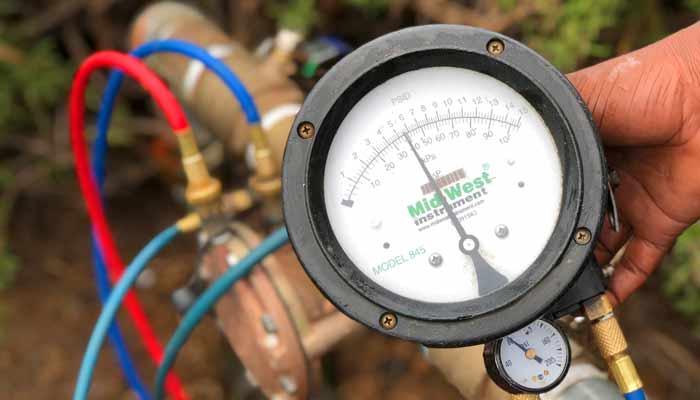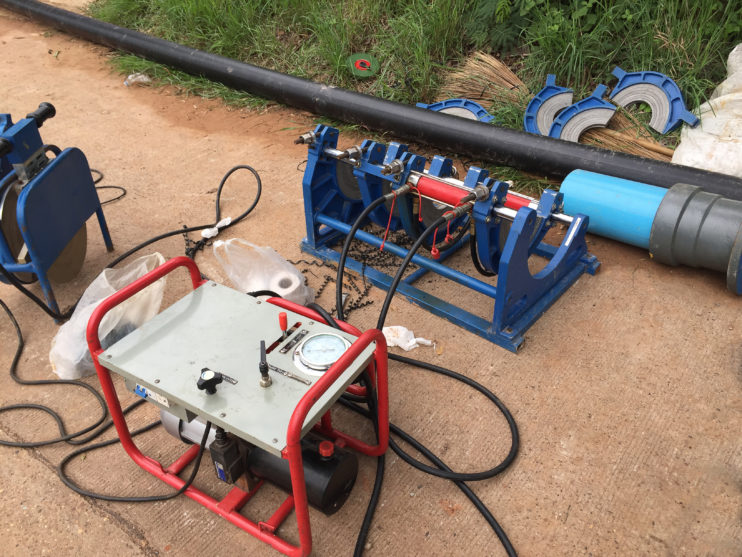Do I Need to Test My Water for Backflow
Do I Need to Test My Water for Backflow
Blog Article
Have you been interested in help on Backflow Testing?

Yes, you need to backflow test your home's water system to make sure that the water is free of toxic substances and unsafe levels of chemicals. As a result of the devices needed and area for error, you should not attempt to carry out backflow testing on your own. We suggest that you call a professional plumber every couple of years to examine your water.
What is Backflow?
In short, backflow is when water moves upwards-- the contrary direction in the plumbing system. This is additionally called "backpressure." When the water moves in this direction, it can combine with harmful toxins as well as present a threat.
What Causes Backflow?
A common root cause of heartburn is a loss of water stress that triggers the water to siphon back right into the water supply. An example is cleaning out a paint bucket using a tube. You load the paint bucket up with water, leaving the hose in the bucket. After time, there is a loss in water pressure and the tube starts to suck the water back right into the supply of water. As you can envision, there are now chemicals from the paint that are getting in the water system, potentially posturing a danger. Several people are not even conscious of backflow screening, however there are many reasons why it's so vital.
Backflow Testing is Called For by Regulation in Specific Cities
Relying on where you live, you could really be needed by legislation to backflow test your law. Iowa City keeps a document of all homes served by the city's water supply. The city calls for that certain "high-hazard" centers go through backflow testing. In many cases, residential properties such as houses and apartment buildings are affected.
You Can Avoid Backflow
If you have a professional plumber set up a heartburn device, dangerous backflow is conveniently avoidable. The plumber will certainly additionally evaluate for backflow and determine if there is an energetic risk. The main objective of a heartburn gadget is to avoid water from moving backward into your water system. Plumbers mount the gadget on the pipelines in your home to guarantee that the water just flows in the right direction.
Backflow Can Influence Both You and also Your City
Lots of cities establish backflow guidelines due to the fact that hazardous backflow can impact the public supply of water along with a single building. The good news is, contemporary cities have backflow tools in place that safeguard the water that comes from a lot of houses as well as business properties. The real risk comes from watering systems, which can damage the supply of water with toxic plant foods, manure, and also various other chemicals.
Call a Plumber to Evaluate for Heartburn Before It is Too Late
A plumbing firm can swiftly examine your residence's water to determine if there are any kind of dangerous chemical degrees. And if you do uncover that your water has high levels of contaminants, a plumber can conveniently mount a heartburn avoidance tool.
Yes, you require to backflow test your home's water supply to ensure that the water is complimentary of toxic substances as well as dangerous degrees of chemicals. A regular cause of backflow is a loss of water pressure that triggers the water to siphon back into the water supply. After some time, there is a loss in water pressure and the hose pipe begins to suck the water back right into the water supply. The main purpose of a backflow gadget is to stop water from flowing backwards right into your water supply. Numerous cities develop heartburn standards due to the fact that dangerous heartburn can affect the public water supply in enhancement to a single building.
WHY DOES BACKFLOW TESTING NEED TO BE DONE EVERY YEAR
What Is Backflow?
Toxic gas backing up into a building is one example of potential backflow issues, but backflow can occur in many other ways.
Backflow is generally referred to as the reversal of a liquid or gas in a plumbing system.
Most issues for the public occur with backflow resulting in contaminated drinking water. If you look up backflow issues online you’ll probably find references to “potable” water. That means drinking water.
There have been backflow issues in the past with drinking water. Chemicals, sewage and other contaminants have found their way into drinking water causing health issues for those that count on the fresh water.
What Causes Backflow?
In a residence or commercial building water generally flows one way. This normal flow is usually driven by consistent pressure in the water and waste system.
Anything that changes the normal pressure in the system can lead to backflow.
Fire hydrant use or malfunction can reverse the normal pressure in the system on a city line, but backflow can occur in a number of different ways.
Sometimes backpressure might be caused by someone using a garden hose and submerging the end of the hose in a pool of liquid. If pressure is lost the flow could reverse and contaminants could be released into the drinking water.
Anytime there is a connection between contaminants and the drinking water there is potential for a backflow issue. Sometimes these connections are not immediately obvious like the garden hose connecting to a building’s drinking water supply.
Backflow Regulations
The Environmental Protection Agency (EPA) provides guidelines and regulations for state and local governments regarding backflow. State and local governments also have their own guidelines and regulations for backflow prevention.
Arizona has its own backflow regulations.
Due to issues with backflow in the past, regulations require backflow preventer devices to be used in nearly all residential and commercial buildings.
A backflow preventer is a device that prevents backflow as cross-connection points where potential backflow issues may occur.
While backflow is not a common occurrence, preventers are in place to make sure there is no contamination should something malfunction or go wrong with a building’s water supply.

I am just very fascinated with Commercial Backflow Testing and I really hope you enjoyed reading my blog post. You should set aside a second to promote this blog if you appreciated it. We love reading our article about What is Backflow Testing?.
We're here 24/7. Report this page